Cleaning the wash water of a public transport vehicle (bus)
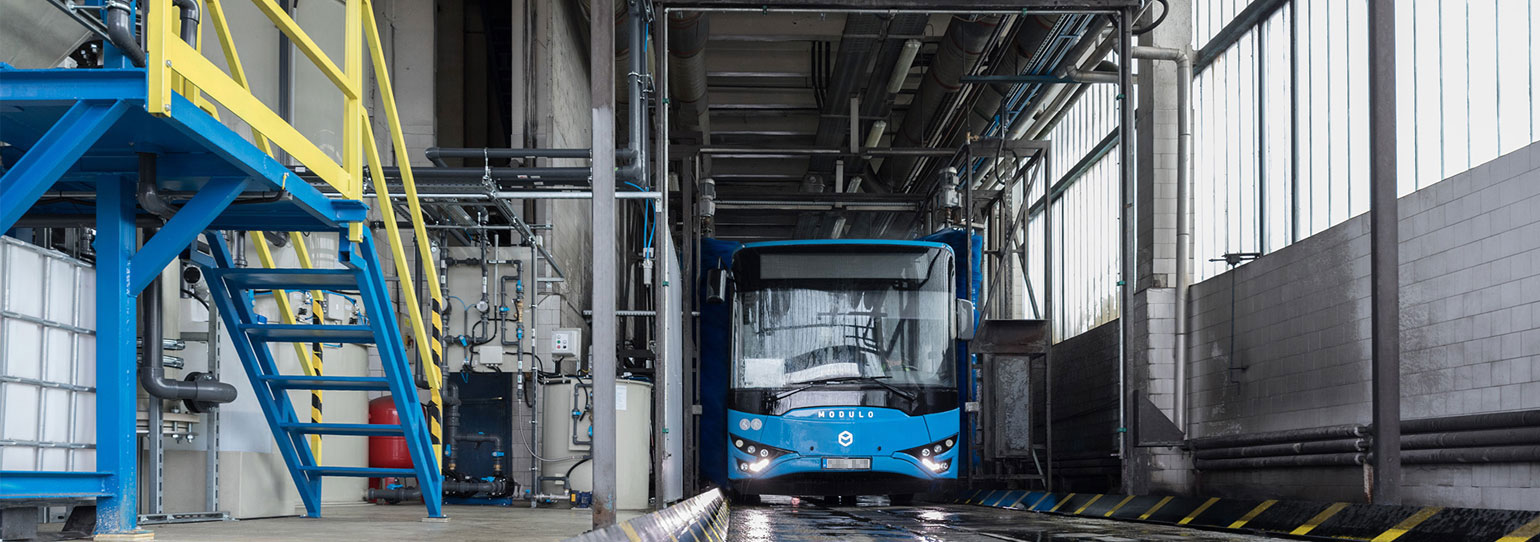
Public transport operators are increasingly paying attention to the cleaning of vehicles. Water from washing must be treated before being discharged into public sewers. Our company has installed a process where the washing water is recycled and reused, and only purified water of a quality that meets the standards is discharged.
The buses are washed by machine. As in the well-known car washes, there are different programmes:
- - pre-washing, soaking
- - rinsing
- - chemical washing
- - rinsing
- - drying
This can be accompanied by a chassis wash, which can be optionally included in the wash programme.
Water run-off from washing, especially if there is also a chassis wash, can contain oil, oily emulsion, detergent water and suspended matter (sand, mud). These must be removed before discharge to the public sewer. Our solution saves water because part of the purified water can be reused for washing. In this case, the last rinse is always with mains water. Only the unused purified water is discharged to the drain outlet.
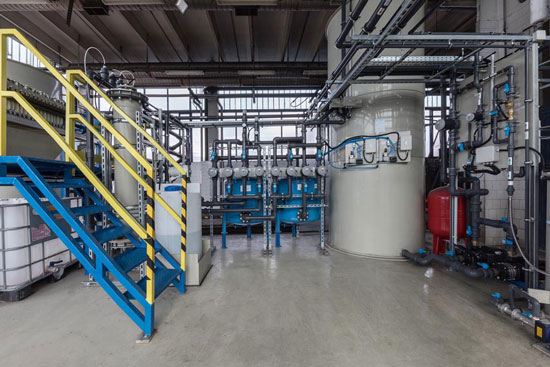
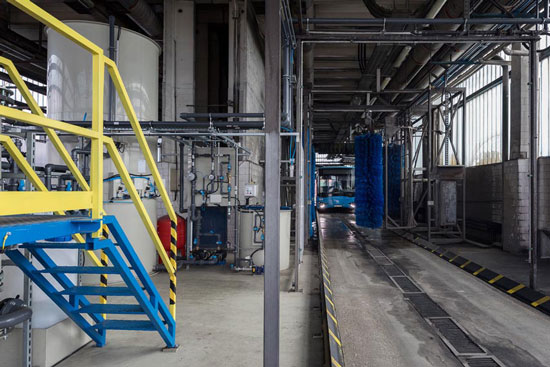
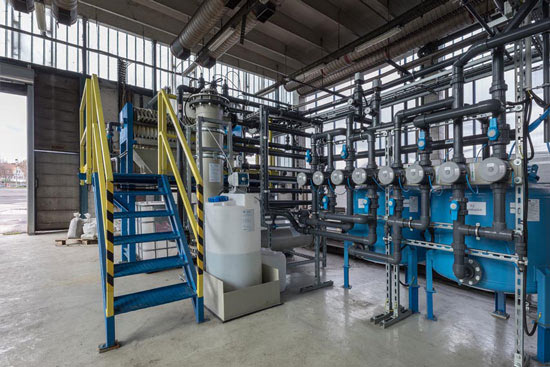
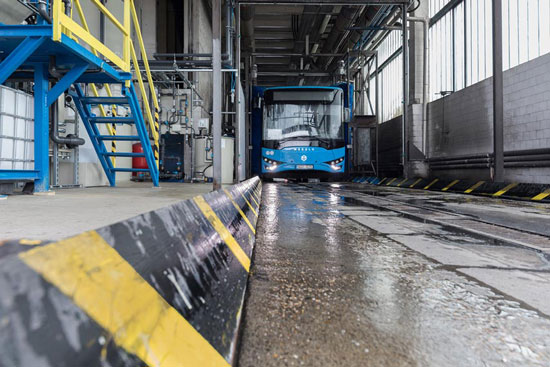
Vehicles are washed in a so-called washing corridor, where they pass slowly through. According to the programme, the body and chassis are washed. Approximately 200-400 l of water per vehicle are used, 80-85 % of which is recycled water. Part of the wash water is carried out by the car body and part evaporates. Replenishment is done with mains water. Washing time per vehicle is about 2-3 minutes, so up to 20 vehicles per hour can be washed, depending on the programme.
